Day 2 :
Keynote Forum
Gultan Kaptan
Ä°stanbul Arel University, Turkey
Keynote: THE IMPACT OF URINARY INCONTINENCE ON QUALITY OF LIFE AND PSYCHOSOCIAL HEALTH IN THE ELDERLY
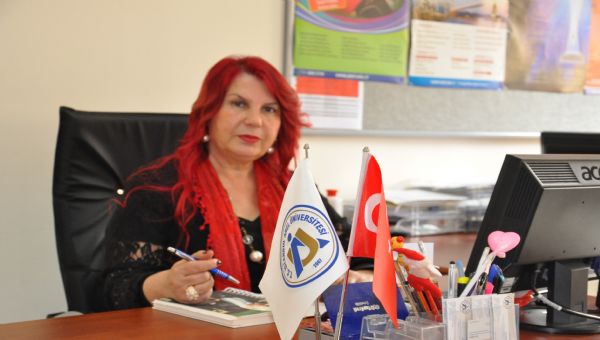
Biography:
Prof.Dr.Gülten Kaptan, PhD in Nursing from Hacettepe University Institute of Health Sciences in the field of Internal Medicine in year of 1997.2005 in the year received the title of associate professor in the same area, has been professor in 2012. Many articles in international journals in the field served as a faculty member. Prof.Kaptan,30 years, has made college and university health research and practice serves as a director of nursing at the hospital. That the author published in Turkish and internal school used as a textbook in health and geriatric diseases are nursing books. Euthanasia, pain and spritüalizm,violent in pregnancy have been published by titles in international book in English. Scientific board member one of the international open access journal. The scientific committee membership in Turkish health journals about nursing.In Turkey ,She is the Turkish Nurses Association, Oncology Nursing Society and Nephrology Nursing associations member. Currently, Istanbul Arel University Medical Nursing is a Professor.
Abstract:
Urinary incontinence (UI) is the involuntary or uncontrollable loss of urine. It is a common and difficult problem for aging adults. It is a problem that affects up to 30% of older persons living outside of hospitals or nursing homes, and is particularly common among elderly women and men. In the elderly, UI can be an important factor in the decision to place an elderly person in a nursing home, in most cases due to the caregiver stress. For those in nursing homes or other long term care facilities, the percentages are even greater. Incontinence can range from minor, occasional dribbling, to occasional unwanted loss of bladder control, to the complete inability to hold one\'s urine There is an increasing prevalence of bladder control problems as the American population ages and the other countries. Simultaneously, there is increasing attention to maintaining an active, fit lifestyle. These two epidemiologic factors ensure that obstetrician-gynecologists will be providing care to women with urinary incontinence. Urinary incontinence is a common disorder affecting millions of American women. Although not painful or life-threatening, urinary incontinence has an insidious way of affecting quality of life. Physicians who identify and treat urinary incontinence may be able to limit these deleterious effects for their patients. There are several causes of urinary incontinence. The most common forms are stress incontinence, wherein urine loss occurs simultaneous with increases in intra-abdominal pressure. Another common form of urinary incontinence is caused by detrusor overactivity. This is essentially untimely contractions of the bladder resulting in urine loss. Typically, this is associated with an overwhelming urge to urinate that cannot be suppressed or delayed. The loss of urine is unpredictable, and the volume lost tends to be moderate or large, simulating voluntary voiding. Combined forms of detrusor overactivity and stress incontinence are common, existing in an estimated one third of women with urinary incontinence.
- Cancer and Tumor Nursing
Cardiovascular Nursing
Surgical Nursing
Clinical Nursing
Healthcare and Management
Women Health Nursing
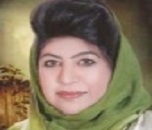
Biography:
Awatif Juma Al Bahar is a Medical Director, Senior Consultant, Obstetrics/Gynecology, Reproductive Endocrinology at the Dubai Gynecology & Fertility Centre, Dubai Health Authority. After completing her graduation, she has specialized in Obstetrics & Gynecology from the German Board, Koln and she has a Membership in Endocrine and Infertility from Academic University in Bonn. She has been selected in 2002 in Dubai Excellency Program. Her name is mentioned in the UAE Book of Special Personalities of All Fields (i.e., medicine, politics, art etc). She has been awarded by his highness Amro Mosa in 2004 as to be the Leader in Medicine and Social Services. She was also awarded as Hero of Health Care in 2012 by his highness ruler of Ajman. She has held multiple posts in various capacities in the OBS/GYN and she is currently the Director of the IVF Board of the Ministry of Health of UAE. She is the Chairperson of the Emirates Obstetrics/Gynecology & Fertility Forum (EOFF) and a regular speaker on UAE activities in mother and child health via media: Television, radio, ladies association, universities etc. She has many publications on polycystic ovaries and infertility
Abstract:
Reproductive health refers to the diseases, disorders and conditions that affect the functioning of the male and female reproductive systems during all stages of life. A woman’s reproductive system is a delicate and complex system in the body, it is important to take steps to protect it from infections and injury, and prevent problems – including some long-term health problems. Hormones are key to reproductive health in all aspects of a woman’s sexual life. They regulate menstruation, fertility and menopause. The WHO assessed in 2008 that "Reproductive and sexual ill-health accounts for 20% of the global burden of ill-health for women, and 14% for men.” Reproductive health is a part of sexual and reproductive health and rights.

Biography:
Dr. Freida Pemberton, RN-BC is a Full Professor of Nursing at Molloy College, Rockville Centre, NY and served in the position of Director of the Graduate Nursing Program for four years. Dr. Pemberton has made numerous contributions to the advancement of the Molloy College community and the community at large. She developed its Graduate Nursing Informatics component of the Administration track. Dr. Pemberton is American Nurses Credentialing Center (ANCC) Board Certified as an Informatics Nurse and continues to practice as a consultant in informatics. She has published on Distance Education, Development of a Faculty Learning Center and A Study on Nurses Attitudinal Tendencies. She has also published numerous websites designed to meet the healthcare needs of communities with limited to no access to healthcare. Dr. Pemberton’s contributions to the Profession are far outreaching after 43 years in practice. She has an exhaustive list of awards and honorable mentions. Dr. Pemberton has involvement in health care organizational programs at local, national, international, and federal levels. She established the World Wide Holistic Health Outreach non-profit 501 c3 public charity serving indigenous communities both nationally and internationally. Dr. Pemberton continues to develop innovative telecommunication programs designed to meet the specific needs of clients both nationally and internationally. She enjoys challenging students to be innovators and design programs and services that will improve the human condition for all. She has developed enrichment programs for the advancement of students in primary and secondary education that focused on science, mathematics, and computers. Students are challenged to be visionaries and to continue the outreach work that incorporates the advancements in telecommunication.
Abstract:
Following five missions to provide healthcare programs for communities in Ghana, Togo, and Benin, West Africa where the average life-span is age 50, the notion to create an individualized tailored-fitted tele health program that incorporated virtual and mobile technology for sustainability was generated. The conditions of hypertension, diabetes, vitamin deficiencies, mal-nutrition, and heart disease contributed to the shortened life-span. These conditions continue to challenge health care providers to produce innovative solutions that will not only resolve their patient-clients’ existing health problems, but reduce their future occurrences. This data generated the creation of the Health Guardian for Longevity Program. The Health Guardian for Longevity Program takes in hand the patients’ assessed health data, mobilizing the powerful tools of mobile, interactive, remote, video, and virtual technologies, as well as selected learning models and behavioral theories, to treat patients as individuals, applying a tailored-centered approach to healthcare. This multifaceted approach allowed caregivers and their patients to focus on the needs to restore, maintain, and integrate healthier behavioral practices. The qualitative pilot study explored the impact of patients’ online use of the Health Guardian for Longevity Program related to their health status and sustainability following a healthcare crisis. In this pilot study, data was randomly collected from 100 participants in Benin, West Africa, who utilized the Health Guardian for Longevity Program for a period of 1.5 years. Qualitative surveys and focus groups were assembled to gather data. The collection of data was analyzed using the QDA Miner Lite software program with themes developed and interpreted for meaning. This study was guided by prior research on the benefits of tailored-centered patient care, the meaningful use of technology in healthcare, and telehealth practice. The results of the analyzed data identified both effective and ineffective practices related to the use of the Health Guardian for Longevity Program. The findings from this pilot research study provided specific strategies for sustainability of quality healthcare using telehealth practice, virtual, and mobile devices. The increased utilization of the Health Guardian for Longevity Program has the potential to shape how care is delivered using an interactive, web-based custom health promotion program.
Angela Moss
Jersey General Hospital, Jersey Channel Islands, UK
Title: Nurse-Led Rapid Access Arrhythmia Clinic
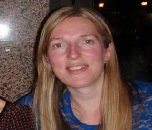
Biography:
Sister Angela Moss has predominantly worked in Cardiology and Critical Care having qualified as a nurse in 1999. Post-graduate qualifications exist in both areas, most recently a Masters module in Arrhythmia Management. Angela is half way through the Masters programme for Advanced Practice. The local arrhythmia service were runners up in the National Arrhythmia Awards in the United Kingdom in 2014. Local innovations have lead to invitations to speak at conference, quality service awards, senior managerial and medical committees and as part of a national group initiative to improve the management of patients with atrial fibrillation.
Abstract:
The Nurse-Led Rapid Access Arrhythmia Clinic is an innovative service which has revolutionised patient access to specialist support, enhanced management of patients with arrhythmias and dramatically reduced waiting times in the cardiology department. Service need was the most significant driver for the establishment of the clinic, which acts as a one stop shop and triage service for patients with arrhythmias. Improving patient access to arrhythmia services was an initial objective of the Arrhythmia Nurse Specialist. As experience has grown, patient assessment and intervention has enabled the arrhythmia nurse to work more autonomously in an advanced nurse practitioner position. As a qualified non-medical prescriber this also enhances complete care. At the start of the service, waiting times for a new cardiology appointment with the medical team was nine months. Appointments for the arrhythmia service are one to two weeks from referral and as a result, overall waiting times for cardiology appointments are six weeks. In 2014, 221 were seen and 263 in 2015. Routes of referral include the emergency department, in-patient departments, primary care and the cardiac team. The majority of patients are assessed and discharged back to primary care. Those who require further input are managed accordingly. An interdisciplinary approach encourages convenient access to the consultant cardiologist and cardiology team including nurse specialists and cardiac physiologists to expedite investigations. Patients, relatives and health professionals can access the service for advice. The successful implementation of the Rapid Access Arrhythmia Clinic has been down to motivation of a close working cardiology team and communication within primary and secondary care. Quarterly statistics and annual reports continue to demonstrate an efficient and effective service with patient satisfaction rated highly.
Elmer Catangui
King Abdulaziz Medical City , Saudi Arabia
Title: Creating, implementing and sustaining an inter-professional education for stroke: a link towards collaborative and integrated patient care
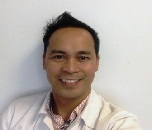
Biography:
Mr Elmer Catangui is a Filipino-British who obtained his stroke nursing expertise from the United Kingdom. He worked as a clinical nurse specialist in stroke and TIA in the UK for 12 years at Imperial College Healthcare NHS Trust, London. He graduated his Masters Degree in London South Bank University major in Nursing but with a background of specialist neuroscience, acute management in stroke, thrombolysis nursing and stroke prevention. He has published numerous articles and research in the UK’s Nursing Standards, British Journal of Nursing and British Journal of Neuroscience Nursing and other international journal of nursing and practice. He has involved in the launching of the pan London Stroke Competencies . He has led and organized various stroke nursing initiatives such as nurse – led ward round and stroke support group. He has been nominated by the UK Health Service Journal Awards for his valuable contribution to stroke care. He has passion in the hyper-acute management of stroke including thrombolysis treatment for acute ischaemic stroke, inter-professional stroke education and secondary stroke prevention. He has been invited in many international conferences as external speaker. He is currently working as a Stroke Nurse Specialist and acting Director of Clinical Nursing at the King Abdulaziz Medical City , Kingdom of Saudi Arabia (Riyadh). He has developed the Specialized Stroke Nursing Program in the Kingdom with excellent feedback from his colleagues. His research interests include: Public health, Stroke epidemiology, stroke management, stroke nursing, thrombolysis, transient ischaemic stroke, Inter-professional learning in stroke, rehabilitation and hyper-acute management of stroke. He is currently an editorial board member of the Public Health Open Journal
Abstract:
The incidence of stroke in the KSA is expected to be higher in the next decades. The creation of the stroke model of KAMC-Riyadh, as a novel care approach of admitting patients directly to the High Dependency Unit ( HSDU), is aimed to improve patient’s functional outcome following a stroke. Prior to the launch, a Specialized Stroke Nursing Program ( SSNP) using an inter-professional approach was developed and implemented in order to address the nurse’s learning needs in stroke care. The aim of the project is to recount the structuring of the SSNP and continuously sustaining it toward collaborative and integrated stroke care. Method: A collaborative team model (CTM) is utilized in order to design, implement and sustain a SSNP. The CMT, consisting of nurse specialist, clinical resource nurses and stroke therapists, work cohesively and regularly meet in order to continuously improve the program components and restructuring the learning objectives focusing on patient safety and outcome. The SSNP is up and running since August 2014 and is consistently evaluated after each run. All participants’ feedback from the course evaluation was collated and analyzed thematically. The findings of the course evaluation were discussed as a team and made some necessary adjustments if necessary. Results: The SSNP has attended by more than 700 nurses from emergency, acute medical and stroke units. Six major themes have emerged using the evaluation feedback: The SSNP as (1) a program focusing on patient safety, (2) an inter-professional program promoting a collaborative stroke care, (3), a sustainable program which is relevant not only to stroke patients but to all medical patients, (4) a starting point to improve stroke care (5) a well-structured program that tailored –made to nurses’ learning needs. Conclusion The creation of the SSNP is a showcase of dedication, passion and commitment of the team in order to provide an inter-professional learning education among nurses. The use of CMT promotes effective communication, coordinated and organized team work. Collaborative team has a direct impact to enhanced and comprehensive stroke care. It has a significant impact on the participant’s learning experience and patient care through enhanced access to bedside care as well as improved quality and safety outcomes.
Biography:
Fiona Cust is working as a faculty of health science in Stafford university, UK. She is specialized in women health nursing, midwifery nursing.
Abstract:
As the number of mothers suffering from postnatal depression (PND) continues to rise at an alarming rate it was decided to explore methods of trying to support new mothers diagnosed as ‘at risk’ of PND. Recent NICE guidelines (2015) have highlighted the need for the utilisation of psychosocial support – as opposed to the, often first hand, use of antidepressant medication. One of the main reasons for PND has been a distinct lack of social interaction and isolation (Dennis 2009). Could, therefore, disclosing to a fellow mother – who has previously shared a similar journey – may help to assist in the recovery from this debilitating illness? A small number of peer support workers (PSW’s) were recruited to offer one to one home visits within the postnatal period to a mother considered to be at elevated risk of PND – as diagnosed by the Edinburgh Postnatal Depression Scale (EPDS). The PSW’s visited the mother within their own homes from week six postnatally for a period of six weeks. Results were recorded both quantitatively and qualitatively by the recording of the EPDS scores, log book entries and one to one interviews. These were transcribed, coded and catergorised. Results collated display that the PSW’s did indeed have a positive effect upon the mothers’ mental health, outlook and indeed, their relationship with their baby.
Biography:
Mison Bashara is working in Gailee Medical Center in Emergency department, Israel. Her main specialization is women health nursing.
Abstract:
Background: In Israel, four criteria allow for legal abortion: women's age <17 or >40, fetal malformation, danger to the woman's health, unmarried woman or caused by rape.
Research Objective: To understand why women seek abortion, so as to build appropriate prevention/intervention programs.
Research Type: Cross-sectional study. Research Population: 102 women who applied to the Committee for Termination of Pregnancy at Galilee Medical Center, January-December 2013.
Research Instruments: Questionnaire examining violence experienced by the woman, use of contraceptives, and motives for abortion. Findings: The mean age of the women was 28.75±7.25 years. Reason for seeking abortion: poor economic situation 53.7%, violence in the home 13.7%. 91.7% reported a poverty-level monthly income no income at all. 42.6% of women who experienced violence in the home had had previous abortion, as opposed to 36.8% who did not experience violence. 57.1% did not use contraceptives regularly. 21.5% cited the prohibitive cost of contraceptives. 18% of participants noted the importance of their attending nurse's presence at the Committee for Termination of Pregnancy.
Conclusions: The major reasons for abortion, poor economic situation and violence in the home, are not included in the legal criteria for abortion. There is a need to re-think public policy on cost of contraceptives and to educate the public on contraceptive use. Violence in the family is more likely to be identified if a nurse is present at the Committee for Termination of Pregnancy. Also, a nurse should advise on the purchase of contraceptives and instruct on their use.
Biography:
Meral Altlok is working as a faculty of Health sciences in Mersin University, Turkey
Abstract:
This research has been done to describe healthy life style behaviors with illness perception of individuals who have essential hypertension and relationship between medicine adaptation. Exemplification of research comprises of 375 patients applying Erciyes University Medicine Faculty Yılmaz Mehmet ÖztaÅŸkın Heart Hospital Cardiology Policlinics and suitable for filling applications older than 18 and diagnosed Essential hypertension at least 6 months ago. Dates of research have been collected as Personal Information Form, Adaptation to Medicine Treatment –Self Efficiency Short Form and Healthy Life Style Behaviors Range II. In statistical analysis, Shapiro Wilk Test, Ki Square Analysis Test, Mann Whitney U have been used p<0,05 has been found meaningful. Patients participating in the research are %67,5 female, %41,9 are 50-59 age frequency, %54,1 primary school and over the majority is married and jobless. It has been determined that %88,1 of patients are over normal weight, %32,8 are smokers and %83,7 are regular medicine users. Healthy life style behaviors range has been found higher at regular medicine users/applying health control, blood pressure under control, living with his family and in city, high school compared to other groups (p<0,05). Adaptation to medicine treatment- self influence range total point has been found higher at female jobless and regular medicine users (p<0,05). Individuals applying to our research mostly have suffered from headache since the beginning of illness (%86,9). In the research the patients having essential hypertension. It has been detected that as they detect their illness, the adaptations of medicine treatment and performing healthy life style behaviors increase (p<0,05). Key words: Essential hypertension, Healthy life style behaviors, medication, adaptation, perception of illness.
Anne-Kari Johannesen
Akershus University Hospital, Norway
Title: A municipal acute unit (MAU) – ideals and realities?
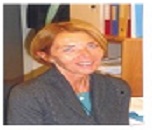
Biography:
Johannesssen completed her PhD at the University of Oslo in 2013. She has a full time position as researcher and teacher at the Faculty of Nursing and Health promotion, Oslo and Akershus University College of Applied Sciences, and holds a part time position as a senior researcher at Health Services Research Unit, Akershus University Hospital, Lørenskog, Norway. She has a background as anestethist nurse and holds a master degree in pedagogics. She is a member of Østfold Hospital research board, and the board of Care - Health and Welfare at Oslo and Akershus University College.
Abstract:
Municipal acute units (MAU) is a new healthcare service that all Norwegian municipalities are obligated to offer their residents within January 1, 2016. These units, organized at the interface between hospital and municipal homecare services, aim to prevent or shorten hospital stays and alleviate some of the pressure on the hospital sector. Urgent inpatient municipal care involves organizational changes, and raise questions whether this creates new interfaces with increased risk of failure in patient safety. Common diagnosis for admission to a MAU are: fractures, pain conditions, leg ulcers, infections, constipation, diarrhea, pneumonia, COPD exacerbation and cognitive impairment. The patient’s average age is 75. GPs, emergency departments and outpatient polyclinics transfer patients to MAUs. The inpatient timeframe is three days. In an pilot study we have explored how user participation in treatment and care happens in a MAU. Findings show that lack of resources, short length of stay and bustle result in limited user participation. The staff collaborate well, but they strive to establish an appropriate collaboration towards the patients’ families, and professionals working at the purchaser offices in the city districts. Fragile patients, some suffering of dementia or complex somatic diseases, influence the degree of user participation. Findings in the pilot study will be important for further development of a PhD project aiming to study conditions promoting and preventing user participation from the perspectives of patients and family caregivers.
Marcy Purnell
University of Memphis, USA
Title: Modulation of the Magnetic Behavior of Aqueous Metal Ions and the Bioelectrodynamic Effects on Wound Healing
Biography:
Ms. Purnell is currently a licensed Family Nurse Practitioner who serves as an Assistant Clinical Professor at the University of Memphis, Loewenberg College of Nursing and a Sub-Investigator for the University of Tennessee Preventive Medicine, Clinical Trials Department. She also practices at Stern Cardiovascular Center on a part-time basis where she has functioned as a NP in both acute care and clinic settings. She received her BSN from the University of Tennessee Health Science Center and her MSN, FNP at the University of Memphis. She is an active member of Sigma Theta Tau, American Academy of Nurse Practitioners, Greater Memphis Association of Advanced Practice Nurses and Desoto County Nurse Practitioner Association. She is currently licensed in both Tennessee and Mississippi as an Advanced Practice Nurse. She is also credentialed and maintains current privileges to practice as a Nurse Practitioner at Baptist Memphis and Baptist Desoto Hospitals.
Abstract:
Introduction/Objectives:Mounting evidence suggests that non-excitable cells respond to changes in membrane potential, and that these “bioelectric” signals play important roles in the development, physiology, regeneration and pathology of cells.It is well established that the transmembrane potential of inflamed/injured cells is depolarized (-20mV) compared to healthy cells (-70mV). Our research suggests that the transmembrane potential of these inflamed/injured cells can be modulated through the application of an electromagnetic field in water such thatincreased cellmigration and decreased cell inflammationoccur as verified by scratch assays, Affymetrix 2.0 microarray analyses and real-time PCR (polymerase chain reaction) validations. Methods: Experimental controlled, in vitroand genomic experiments were conducted onmouse fibroblasts (L929) and human breast epithelial cells (MCF-10A). The experiments involved culturing aliquots of each cell line in growth media that was reconstituted with a hypotonic saline solution (3mM, NaCl) that had been exposed to an electromagnetic field generated by a device called the Cellular Energy Transfer Science (CETS) unit. The controls consisted of cells cultured in media prepared with the same hypotonic saline solution prior to treatment with the CETS unit. Aliquots of each cell type were plated and scratches made (n=18) in each of the treated and control plates of these cell lines. Phase contrast pictures were obtained at 3-hour intervals until the treated groups reached confluence. The data were analyzed withImageJ software to obtain the percent area of wound healed over time. We then conducted Student’s t-test between the percent change in area at the time points of 3 and 9 hours using SAS 9.4. Also, after isolating mRNA with a QIAcubefrom the treated and control MCF-10A cells grown in the treated and control media for 3 days,Affymetric 2.0 microarray and real-time PCR were conducted. The microarray data were analyzed using Ingenuity pathway analysis and the real-time PCR data were analyzed with the delta-delta CT method and with unpaired t-tests using SAS 9.4. Results: In the scratch assay analysis, there was a significant difference in percent area of wound healed over time in the treated versus the control groups. Also, there was asignificant up-regulation and fold change noted inAmphiregulin (AREG) and vascular endothelial growth factor (VEGF) that aregenes known to regulate wound care. Chloride intracellular channel protein 4 (CLIC4) which is found to help regulate cell pH, transepithelial transport and membrane potential also showed a significant fold change in gene expression. Conclusion: Wound care presents significant challenges to our health care system. The scratch assay data suggest improved wound healing through organized cell polarity and migration. Also, the genomic data suggests the treated hypotonic saline solution from the CETS unit significantly affectstranscription and gene expression of membrane potential and wound healing. This application of the electromagnetic field by the CETS unit has potential to translate to human subjects in the near future through the administration of footbaths/baths. In vivo mouse experiments and Phase 1 safety clinical trials are currently under way and could offer a new treatment option with few side effects for wound care that society as yet to experience.
